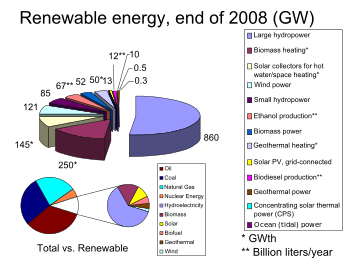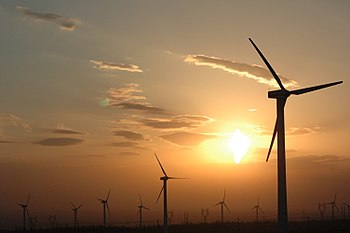 |
|
Sugar cane residue can be used as a biofuel (Photo
credit: Wikipedia) |
However, we have a long way to go to refine and make economic and practical
these biofuels that we are researching. A study by Oregon State University
proves this. We have yet to develop biofuels that are as energy-efficient as
gasoline made from petroleum. Energy efficiency is the measure of how much
usable energy for our needed purposes is derived from a certain amount of
input energy. (Nothing that mankind has ever used has derived more energy from
output than from what the needed input was. What has always been important is
the conversion—the end-product energy is what is useful for our needs, while
the input energy is just the effort it takes to produce the end-product.) The
OSU study found corn-derived ethanol to be only 20% energy efficient (gasoline
made from petroleum is 75% energy efficient). Biodiesel fuel was recorded at
69% energy efficiency. However, the study did turn up one positive:
cellulose-derived ethanol was charted at 85% efficiency, which is even higher
than that of the fantastically efficient nuclear energy.
Recently, oil futures have been down on the New York Stock Exchange, as
analysts from several different countries are predicting a surge in biofuel
availability which would offset the value of oil, dropping crude oil prices on
the international market to $40 per barrel or thereabouts. The Chicago
Stock Exchange has a grain futures market that is starting to “steal”
investment activity away from the oil futures in NY, as investors are
definitely expecting better profitability to start coming from biofuels.
Indeed, it is predicted by a consensus of analysts that biofuels shall be
supplying seven percent of the entire world's transportation fuels by the year
2030. One certain energy markets analyst has said, growth in demand for diesel
and gasoline may slow down dramatically if the government subsidizes firms
distributing biofuels and further pushes to promote the use of eco-friendly
fuel.
There are several nations that are seriously involved in the development of
biofuels.
There is Brazil, which happens to be the world's biggest producer of ethanols
derived from sugars. It produces approximately three and a half billion
gallons of ethanol per year.
The United States, while being the world's greatest oil-guzzler, is already
the second-largest producer of biofuels behind Brazil.
The European Union's biodiesel production capacity is now in excess of four
million (British) tonnes. 80 percent of the EU's biodiesel fuels are derived
from rapeseed oil; soybean oil and a marginal quantity of palm oil comprise
the other 20 percent.
















